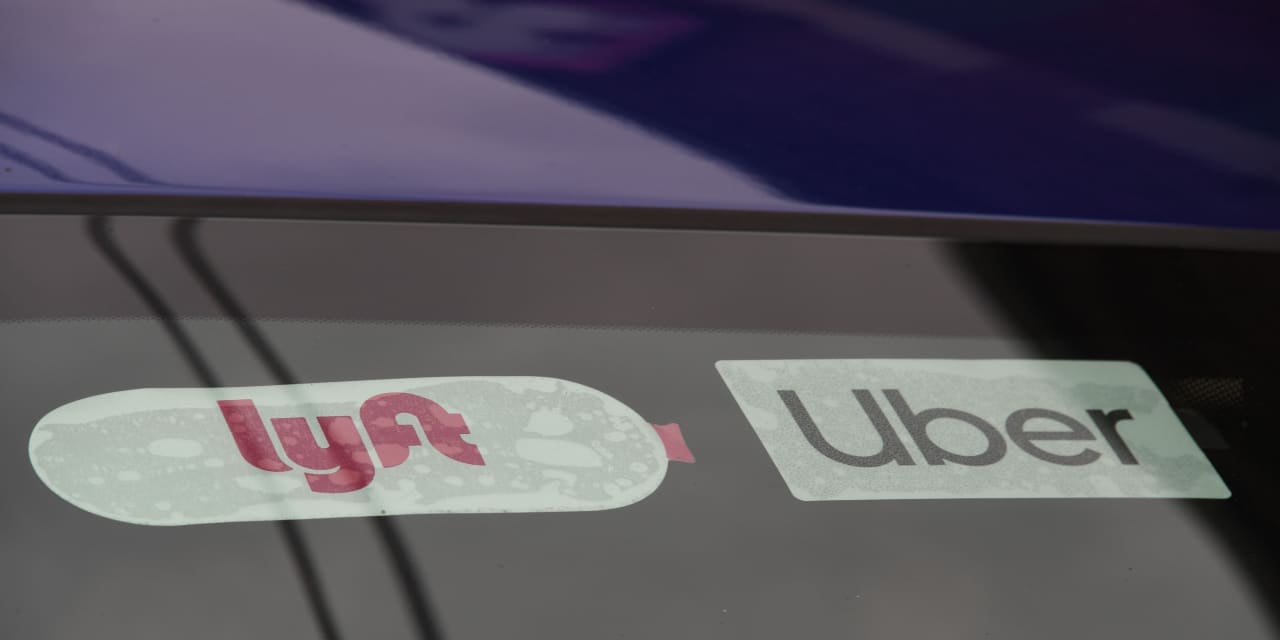The fortunes of gig-economy giants like Uber Technologies Inc., DoorDash Inc. and Instacart will increasingly depend on their ability to broaden what they deliver and to integrate more deeply into local economies, Goldman Sachs analysts said on Thursday. But they saw fewer benefits this year for one of the bigger industry players that hasn’t expanded into delivery, Lyft Inc.
Analysts at Goldman downgraded shares of Lyft
LYFT,
to a neutral rating from buy, saying the ride-hailing platform’s price cuts for rides and expectations for solid demand growth had already been priced in to Wall Street’s financial estimates this year.
Shares of Lyft finished 0.3% lower on Thursday.
The analysts also said they “continue to see execution risks” as Lyft contends with higher insurance costs to cover drivers on the job. And they said there were still “a wide range of topline outcomes in the quarters ahead” as Lyft tries to set itself apart from its larger rival, Uber
UBER,
Along with cutting prices last year, Lyft has introduced new services that pair women or nonbinary riders and drivers and that help businesses with costs for rides. During its third quarter, the back-to-school season and a bigger return to offices helped Lyft’s results.
Shares of both Uber and Lyft ran higher last year, and other analysts have wondered whether the ride-hailing platforms have anything left to keep the momentum going into this year.
But Goldman analysts kept their buy ratings on Uber, citing its more concerted focus on margins and profits, and on Maplebear Inc.
CART,
the company better known as Instacart. They expressed optimism over ride-sharing and online delivery overall, adding that they would increasingly be judged by their ability to participate effectively in local commerce.
“We continue to see Mobility and Delivery as some of the fastest growing verticals across our internet coverage today, with double-digit market growth across ridesharing, food delivery, and new verticals (incl. grocery, convenience, alcohol, on-demand retail, etc.),” the analysts said.
They added that they believed investor discussions would remain focused on how those companies capitalize on those opportunities and grow bookings, margins and profit through this year and beyond.
“We continue to frame [Instacart] as positively exposed to two key secular growth themes in our coverage universe: 1) the potential for delivery platforms to enable the digital transition of the grocery industry as consumers increase their adoption of online channels; and 2) the rise of retail media networks as an area of growth within the broader digital advertising industry that can continue to attract greater ad/promotion budgets over time,” the analysts said.
Retail media — the practice of businesses using space in their stores and online to run advertisements that others pay for — is a small but growing part of sales for companies like Amazon.com Inc.
AMZN,
Walmart Inc.
WMT,
and ride-hailing and delivery apps. Uber has targeted more than $1 billion in ad sales by this year, the Goldman analysts said.
Read the full article here




